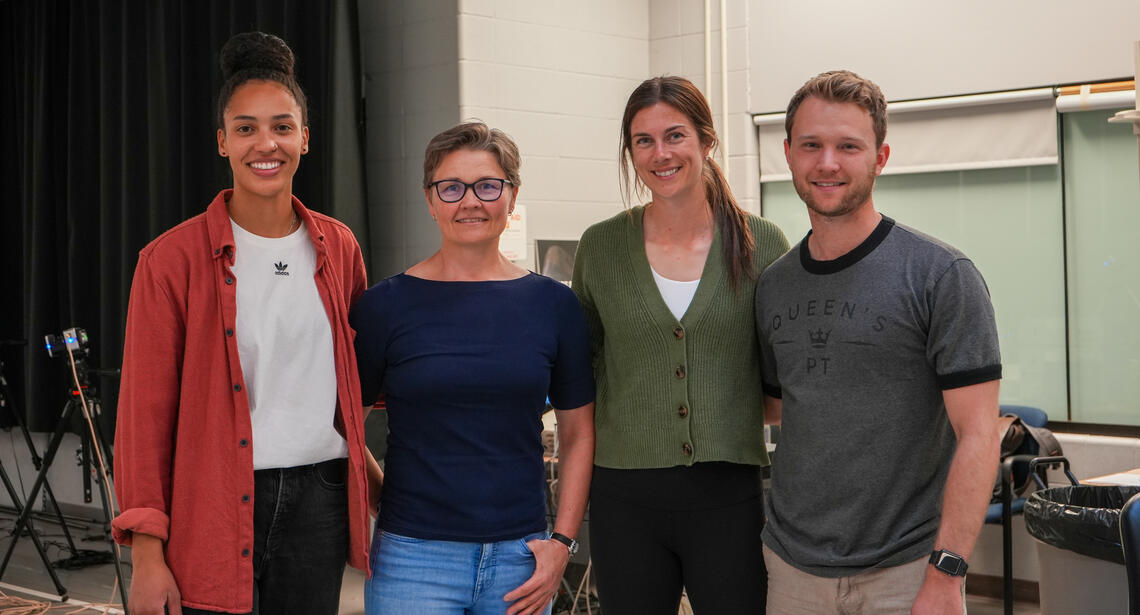In the early 2000s, researchers around the world sought to understand why female athletes experience anterior cruciate ligament (ACL) injuries at a rate four to six times higher than their male counterparts.


Nada Hassanin
What followed was a 15-year-long study to better understand the mechanics responsible for ACL injuries.
The study determined that high-knee abduction loading — where the knee buckles inwards and internally rotates during pivoting and landing moments in sport — was the key factor.
Now, with the mechanism of injury identified, Dr. Kati Pasanen and her team at the Integrative Neuromuscular Support Performance Lab in the Human Performance Lab at the Faculty of Kinesiology are collaborating with the Dinos Women’s Basketball and Women’s Soccer teams to conduct pre-season testing on the athletes to create individual player-risk profiles to prevent ACL injuries from occurring altogether.
“Using sport-specific drills where athletes perform direction changes and landings in our biomechanical lab — where we have 16 high-speed camera and force-plates — we can measure kinetics and kinematics during those movements,” says Pasanen, PhD, an associate professor with the faculty. “We can get very detailed information of their biomechanics during these game-like situations.”


Nada Hassanin
The goal of the testing protocol is to determine athletes’ risk to develop ACL injuries and provide them with individually tailored exercises, says Pasanen: “Many previous studies have already shown we can prevent ACL injuries. The problem is these prevention programs are only effective in research settings. So, when the study ends, athletes don’t use them anymore.”
Her protocol aims to change that. “Previous intervention programs are warm-up programs which are just one piece in this puzzle,” says Pasanen. “ACL injuries occur in very fast movements like cutting and pivoting and landing situations. Warm-up exercises are not challenging enough to improve muscle strength and game-like movement skills.”
In addition, Pasanen says, “Working very closely with team coaches, we want to use game-like drills which athletes will be more willing to use, rather than generic warm-up drills, to improve sport-specific direction and landing techniques, which are when ACL injuries typically occur.”
Pasanen adds that the testing and intervention protocol will be combined with strength and resistance training to improve athletes’ maximal strength and power. This will ensure that athletes are able to safely load their knees during explosive movements to reduce injury risk but will also help to improve their sport-specific performance capacity.
In the months to come, from pre-season to sport season, Pasanen and her team will observe and track the Dinos athletes’ injury profiles, followed by post-season testing in 2024, putting athletes through the same battery of tests to determine whether knee abduction loading and ACL injury risk decreased with the application of their prevention protocol.







































